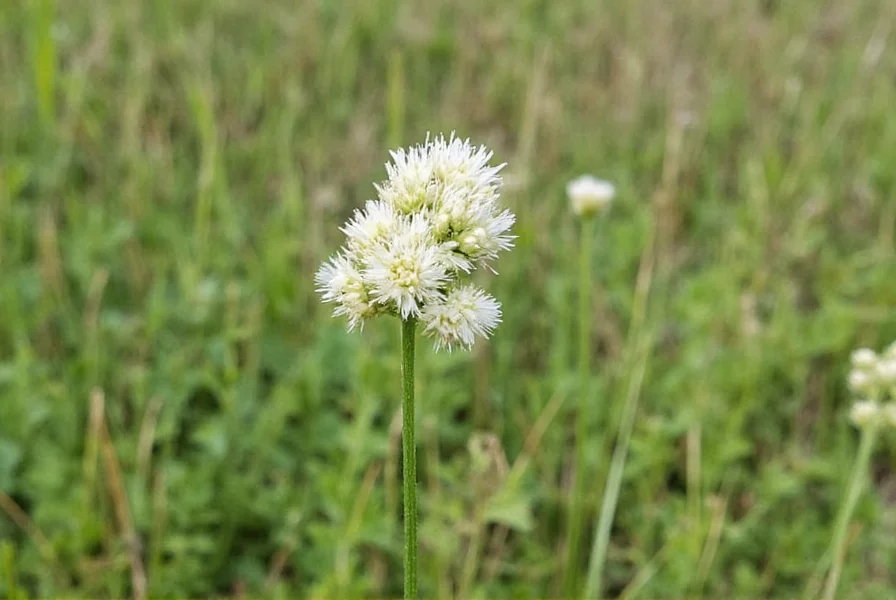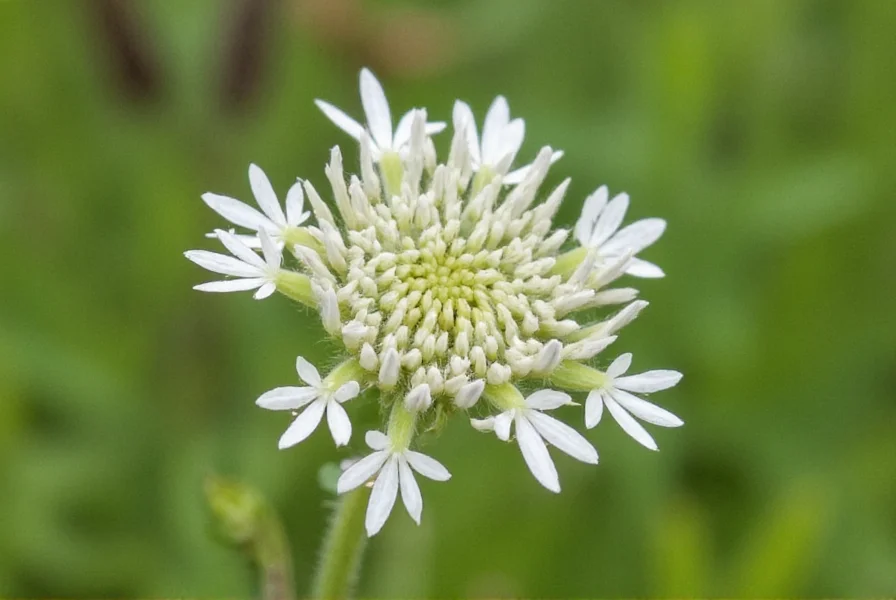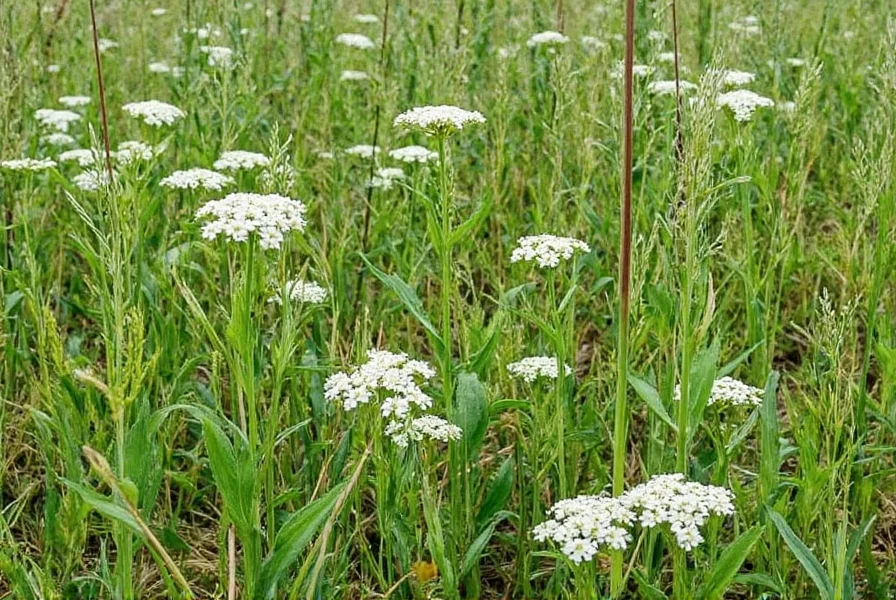Understanding this valuable native species helps conservationists, gardeners, and land managers make informed decisions about ecosystem restoration and sustainable landscaping. White prairie clover serves as a critical food source for bees, butterflies, and other beneficial insects while improving soil health through its nitrogen-fixing root system.
Botanical Classification and Scientific Background
White prairie clover belongs to the Fabaceae family, scientifically classified as Dalea albiflora. Formerly placed in the Petalostemon genus, this plant shares characteristics with other prairie legumes but maintains unique identifying features. Unlike true clovers in the Trifolium genus, Dalea species feature more cylindrical flower structures and different leaf arrangements.
Physical Characteristics and Identification
Identifying white prairie clover requires attention to several key features:
| Feature | Description |
|---|---|
| Height | 1-3 feet tall, occasionally reaching 4 feet in optimal conditions |
| Flowers | Cylindrical spikes of small white flowers, 1-3 inches long |
| Leaves | Pinnately compound with 5-11 narrow leaflets, gray-green color |
| Stems | Woody at base, multiple branching stems, covered in fine hairs |
| Blooming Period | May through August, depending on regional climate |
The most distinctive feature is its dense, bottlebrush-like flower spikes that appear white from a distance but reveal tiny individual flowers up close. These blooms emit a subtle fragrance that attracts various pollinators. The plant's gray-green foliage provides visual contrast against typical prairie grasses.
Habitat and Geographic Distribution
White prairie clover thrives in specific ecological niches across western North America. Its natural range extends from:
- The Great Plains region from Canada to Texas
- Rocky Mountain foothills and valleys
- Southwestern deserts at higher elevations
- California's Central Valley and coastal ranges
This species prefers well-drained sandy or gravelly soils in full sun exposure. It commonly appears in native prairie restorations, roadside plantings, and conservation areas where its deep taproot system helps prevent soil erosion. Unlike many cultivated clovers, white prairie clover demonstrates remarkable drought tolerance once established.
Ecological Importance and Benefits
The ecological value of white prairie clover extends far beyond its aesthetic appeal. As a native legume, it performs several critical ecosystem functions:
- Nitrogen fixation: Through symbiotic relationships with rhizobia bacteria, it enriches soil fertility
- Pollinator support: Provides nectar and pollen for native bees, butterflies, and hummingbirds
- Wildlife food source: Seeds serve as food for birds and small mammals
- Soil stabilization: Deep root system prevents erosion on slopes and disturbed areas
- Succession species: Helps restore degraded lands by improving soil conditions for other plants
Research shows white prairie clover supports over 20 native bee species, making it particularly valuable for declining pollinator populations. Its flowering period coincides with critical times when other native food sources may be scarce.

Cultivation and Landscaping Applications
Gardeners and land managers increasingly recognize white prairie clover's value for sustainable landscaping. When incorporating this species into plantings:
- Choose sites with full sun exposure and excellent drainage
- Prepare soil by removing competing vegetation but avoid soil amendments
- Plant seeds in fall for natural stratification or cold-treat before spring planting
- Space plants 12-18 inches apart to allow for natural spreading
- Avoid overwatering, as established plants prefer dry conditions
Unlike many non-native clovers, white prairie clover requires minimal maintenance once established. It typically doesn't need fertilization and resists most common pests. This species works well in native plant gardens, xeriscapes, and restoration projects focused on creating habitat for native pollinators.
Differentiation from Similar Species
Several plants resemble white prairie clover, requiring careful identification:
- Silverleaf prairie clover (Dalea ornata): Features silvery foliage and purple-tinged flowers
- White prairie clover vs. white sweet clover: Sweet clover has taller growth habit and different flower structure
- White prairie clover vs. white clover: True white clover (Trifolium repens) has trifoliate leaves and rounder flower heads
- Indiangrass: Sometimes confused when not in bloom, but lacks the distinctive flower spikes
Accurate identification matters for conservation efforts, as introducing non-native species can disrupt local ecosystems. Consulting regional native plant guides helps ensure proper species selection for specific locations.
Conservation Status and Challenges
While not federally listed as endangered, white prairie clover faces several conservation challenges:
- Habitat loss due to agricultural conversion and urban development
- Competition from invasive plant species
- Overgrazing in some regions affecting natural populations
- Limited genetic diversity in fragmented populations
Conservation organizations recommend using locally-sourced seed stock when restoring habitats to maintain genetic integrity. Many native plant nurseries now offer regionally appropriate white prairie clover varieties for restoration projects.

Practical Applications and Historical Uses
Indigenous peoples historically utilized white prairie clover for various purposes:
- Medicinal applications for digestive issues and skin conditions
- Food source, with young shoots sometimes eaten raw
- Ceremonial uses in some tribal traditions
- Soil improvement in traditional agricultural practices
Modern applications focus primarily on ecological restoration, sustainable landscaping, and supporting pollinator health. Unlike some cultivated clovers, white prairie clover isn't typically used as livestock forage due to its relatively low biomass production.
Frequently Asked Questions
How do you identify white prairie clover versus other similar species?
White prairie clover can be identified by its cylindrical white flower spikes, pinnately compound leaves with 5-11 narrow leaflets, and gray-green foliage. Unlike true clovers (Trifolium species), it has a more upright growth habit and different flower structure. The most reliable identification feature is the dense, bottlebrush-like flower arrangement that appears white from a distance.
What are the ideal growing conditions for white prairie clover?
White prairie clover thrives in full sun with well-drained sandy or gravelly soils. It prefers neutral to slightly alkaline pH and demonstrates excellent drought tolerance once established. This species doesn't require fertilization and actually performs better in low-nutrient soils. It typically grows 1-3 feet tall and blooms from late spring through summer.
Is white prairie clover beneficial for pollinators?
Yes, white prairie clover provides significant benefits for native pollinators. Its flowers produce nectar and pollen that attract over 20 species of native bees, butterflies, and hummingbirds. The blooming period coincides with times when other native food sources may be scarce, making it particularly valuable for supporting pollinator populations throughout the growing season.
Can white prairie clover be grown in home gardens?
Yes, white prairie clover works well in native plant gardens and xeriscapes. It requires minimal maintenance once established, prefers full sun and well-drained soil, and doesn't need fertilization. Gardeners should plant regionally appropriate seed stock and avoid overwatering, as this drought-tolerant species prefers drier conditions. It typically doesn't spread aggressively like some non-native clovers.
How does white prairie clover contribute to soil health?
As a legume, white prairie clover fixes atmospheric nitrogen through symbiotic relationships with rhizobia bacteria in its root nodules. This process enriches soil fertility naturally without chemical fertilizers. Its deep taproot system also improves soil structure, increases water infiltration, and helps prevent erosion. These soil-enhancing properties make it valuable for land restoration projects and sustainable agricultural practices.











 浙公网安备
33010002000092号
浙公网安备
33010002000092号 浙B2-20120091-4
浙B2-20120091-4